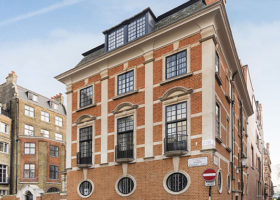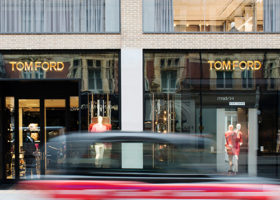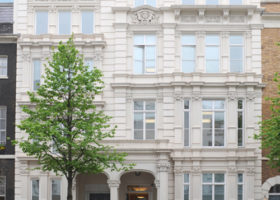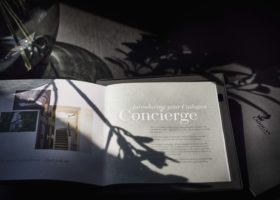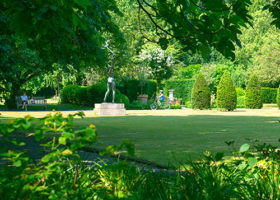Nature’s Architects
New biomimicry art trail showcases what we can learn from the world’s greatest architect – nature – launched by Museum of Architecture and Cadogan, from 25 July – 25 September
Cadogan has partnered with the Museum of Architecture to create ‘Nature’s Architects’, a series of architectural installations across Chelsea showcasing biomimicry – the science and philosophy of what we can learn from nature.
The trail along Pavilion Road and Duke of York Square features 20 micro homes designed by five pioneering architecture studios (Gruff Architects NOOMA Studio, Studio AKI, Built.Works and a collaboration between Madeleine Kessler Architecture, Ness Lefoy and Rosie Hervey. Each fascinating structure (up to a metre high) is inspired by a different creature or plant – such as bears, frogs, owls and weaver birds – to highlight the many insights and innovations nature offers us.
Following on from a number of urban greening projects across Chelsea that have seen Cadogan partner with major fashion designers such as Louis Vuitton, this tie-up with a group of progressive architects has produced a clutch of inspiring ideas designed to encourage greater thought around how the built world can exist in harmony with nature. Materials inspired by coral reefs and by the way jellyfish harness natural light are some of the fascinating innovations being showcased, alongside proofs of concept for floating cities based on lily pads, which will appeal to people of all ages.
Some of the highlights include:
– Weaver Bird – inspired by the suspended nests of the weaver bird, this structure uses a woven method, similar to a helical formation, to create a secure and safe exterior
– Cactus – mimicking the nature of a cacti and its ability to grow out of unlikely places, this design looks at what challenges must be overcome to settle, such as access to food and water supply
– Exoshelters – replicating spiderwebs or exoskeletons to show off an amazing natural material – spider silk, which is five times stronger than steel and 1000 times thinner than human hair
– Kingfisher’s Nest – mimicking how kingfishers dig their homes deep into dirt banks or old termite mounds to create a tower of burrows letting in light from above
– Termite City – a termite mound can reach up to 10 metres high to protect underground nests and circulate fresh air to flow downwards
– Veil House – inspired by veiled lady mushrooms, the structure plays with hole-shapes on the exterior using the Voronoi tessellation pattern to reflect the idea of public and private layers
– Octopus – this design looks at how a building can blend into its surrounding environment
– Bat Boardwalk –bats hang upside down in the under crofts of buildings, an otherwise unused space
– Hedgehog House – this miniature home explores how humans can use foraged materials to create shelters, similar to hedgehog homes made from mosses, grass, twigs and leaves
The launch of this trail complements Cadogan’s Chelsea 2030 strategy, launched in Summer 2021 following extensive stakeholder and community consultation. The strategy sets out how Chelsea can significantly reduce its environmental impact, support a thriving community and improve climate resilience. Progress has already been made towards meeting the 12 targets, across impact areas including carbon emissions, air quality, greening, waste, wellbeing and culture – including a commitment to emit Net Zero Carbon by 2030.
Kate Neale, Head of Sustainability at Cadogan, said: “Nature’s Architects is a fascinating project that will hopefully inspire people of all ages to think a bit differently about nature, and what we can learn from plants and animals of all sizes. The natural world is incredibly adaptive and can inspire us with new ways to tackle many of the global challenges we’re facing. The recent heatwave is a stark reminder of the real impacts of climate change, making it more important than ever that we embrace genuinely sustainable design like the kinds of progressive, pioneering architecture on display here.”
People are invited to download the printable map and take part in various online activities and tasks via a QR code found at each structure. Visit the website to find out more.
